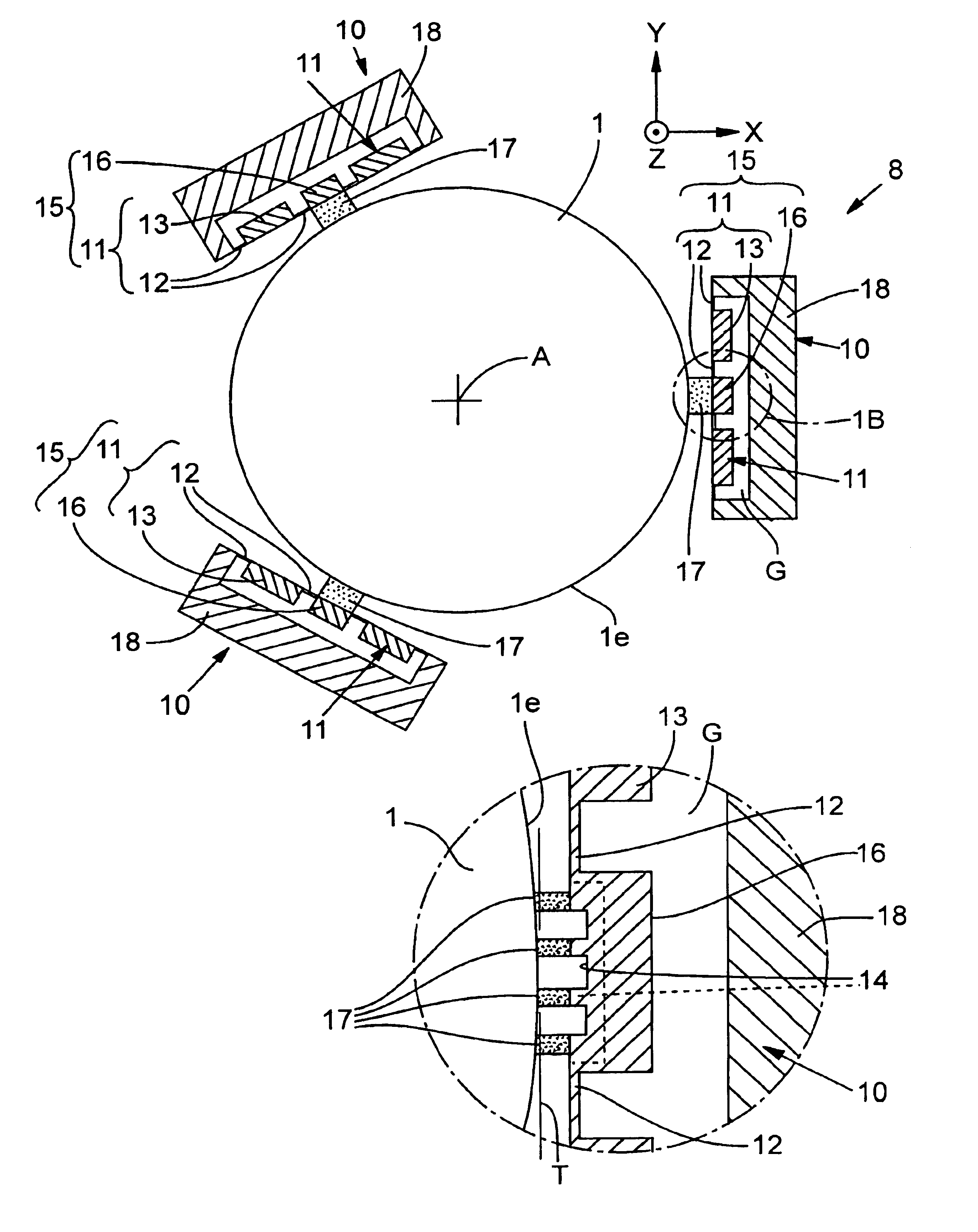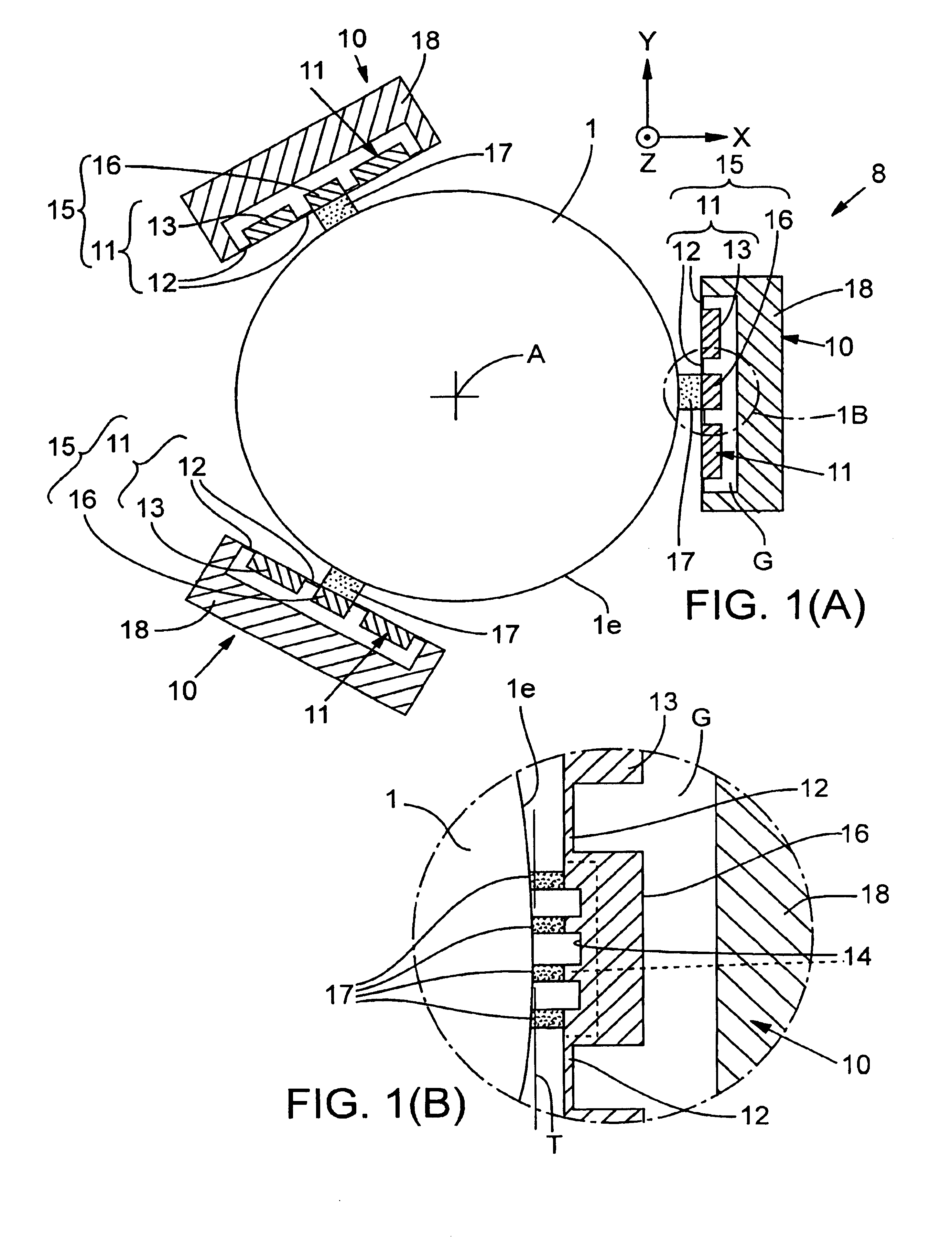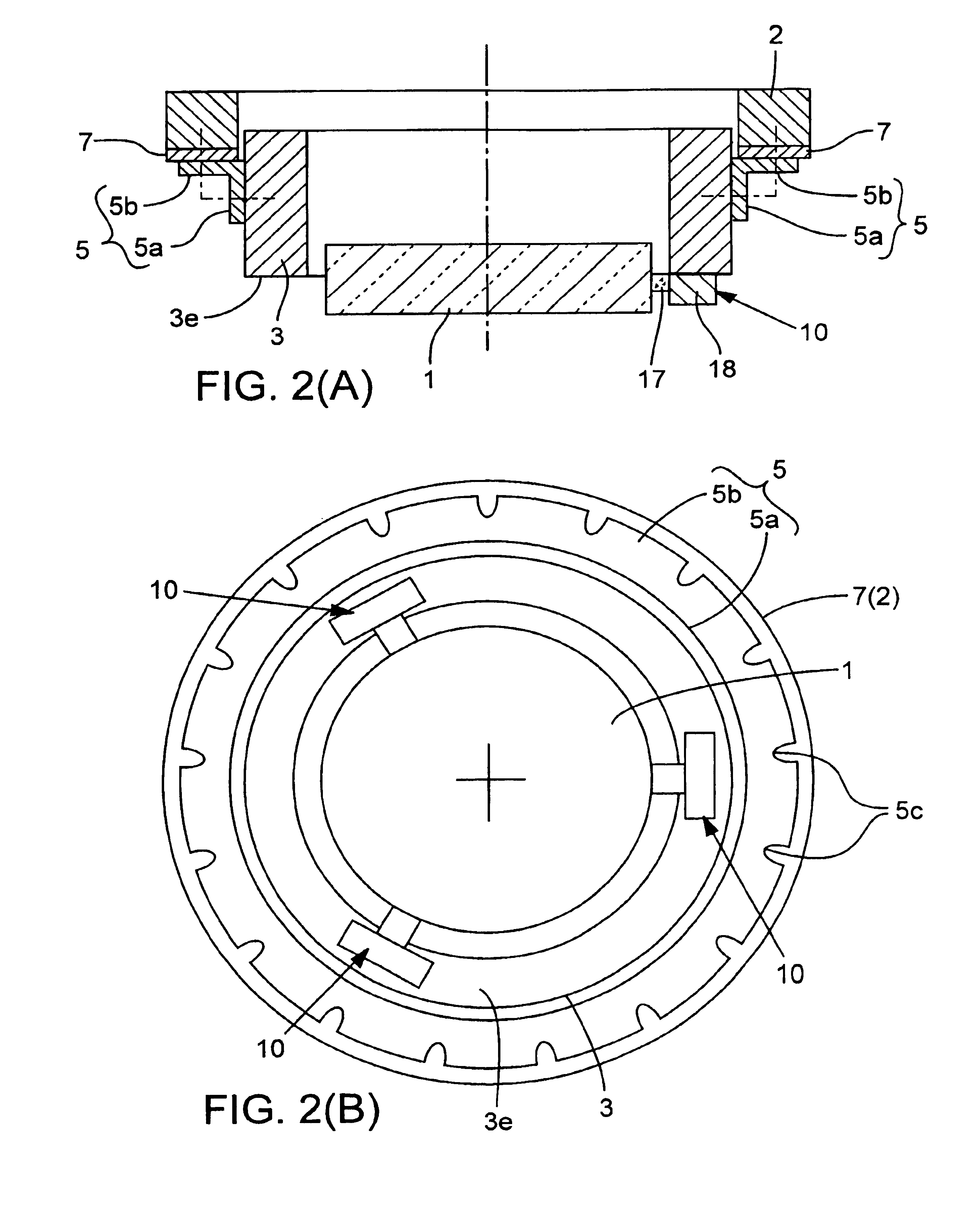Optical-element mountings exhibiting reduced deformation of optical elements held thereby
a technology of optical elements and mountings, applied in the field of optical element mountings, can solve the problems of unsatisfactory performance of conventional mountings of optical elements in these respects, and achieve the effect of optimal performan
- Summary
- Abstract
- Description
- Claims
- Application Information
AI Technical Summary
Benefits of technology
Problems solved by technology
Method used
Image
Examples
first representative embodiment
An optical-element mounting according to this representative embodiment is depicted in FIGS. 1(A)-1(B) and 2(A)-2(B), in which the depicted optical element is, by way of example, a plate-shaped mirror 1. The mirror 1 is shown as it would be mounted within an optical column (not shown) of an optical system. Referring to FIGS. 1(A) and 2(B), the mirror 1 is mounted to the optical column by an optical-element mounting 8 comprising three holding devices 10 arranged equi-angularly (120° intervals) relative to each other around the circumference of the mirror 1. The mounting 8 serves to hold and support the mirror 1 to a mounting member 3 (having a cylindrical configuration in this embodiment), which in turn is attached to a flange 5 (having an annular configuration in this embodiment) of an optical column, discussed later below (FIG. 2(A)).
Details of the mounting 8 are shown in FIGS. 1(A)-1(B). Each holding device 10 of the mounting 8 comprises a linking unit 18 attached, in this embodim...
second representative embodiment
With respect to this embodiment, reference is made first to FIGS. 3 and 4, which show an optical element 201 (e.g., a mirror) that includes multiple mounting protrusions 201A. The mounting protrusions 201A in this embodiment are formed as integral portions of the mirror 201 at three respective locations situated equi-angularly relative to each other around the periphery of the optical element 201. The mounting protrusions 201A are held by respective holding devices of an optical-element mounting according to this embodiment, as described in detail below.
Thus, an optical-element mounting according to this embodiment comprises multiple holding devices 20, which are described below with reference to FIGS. 5-8. Turning first to FIG. 6(A), a “vertical” (extending in the Z-direction) clamping-support unit 21 receives a respective mounting protrusion 201A of the optical element 201. The clamping-support unit 21 includes a first contact portion 22 configured for contacting the “upper” surfa...
PUM
 Login to View More
Login to View More Abstract
Description
Claims
Application Information
 Login to View More
Login to View More - R&D
- Intellectual Property
- Life Sciences
- Materials
- Tech Scout
- Unparalleled Data Quality
- Higher Quality Content
- 60% Fewer Hallucinations
Browse by: Latest US Patents, China's latest patents, Technical Efficacy Thesaurus, Application Domain, Technology Topic, Popular Technical Reports.
© 2025 PatSnap. All rights reserved.Legal|Privacy policy|Modern Slavery Act Transparency Statement|Sitemap|About US| Contact US: help@patsnap.com



